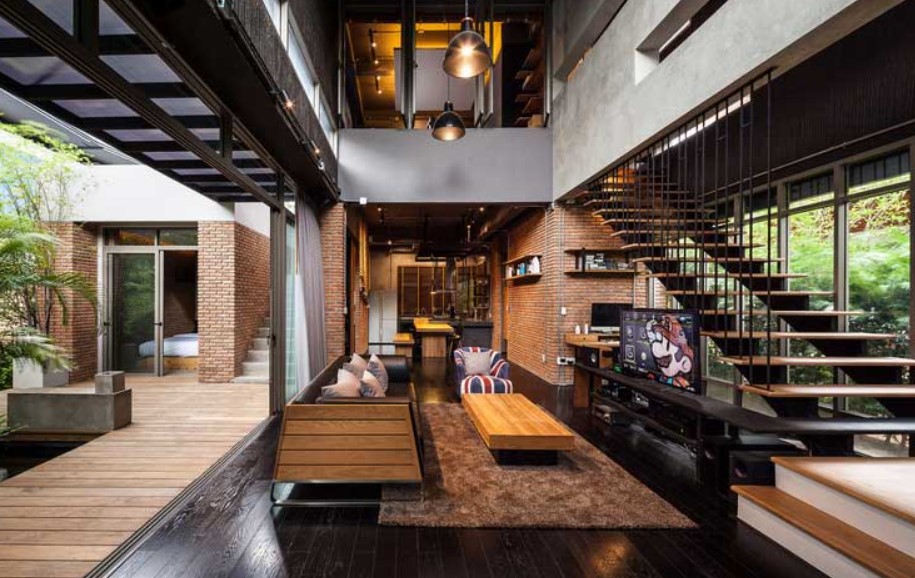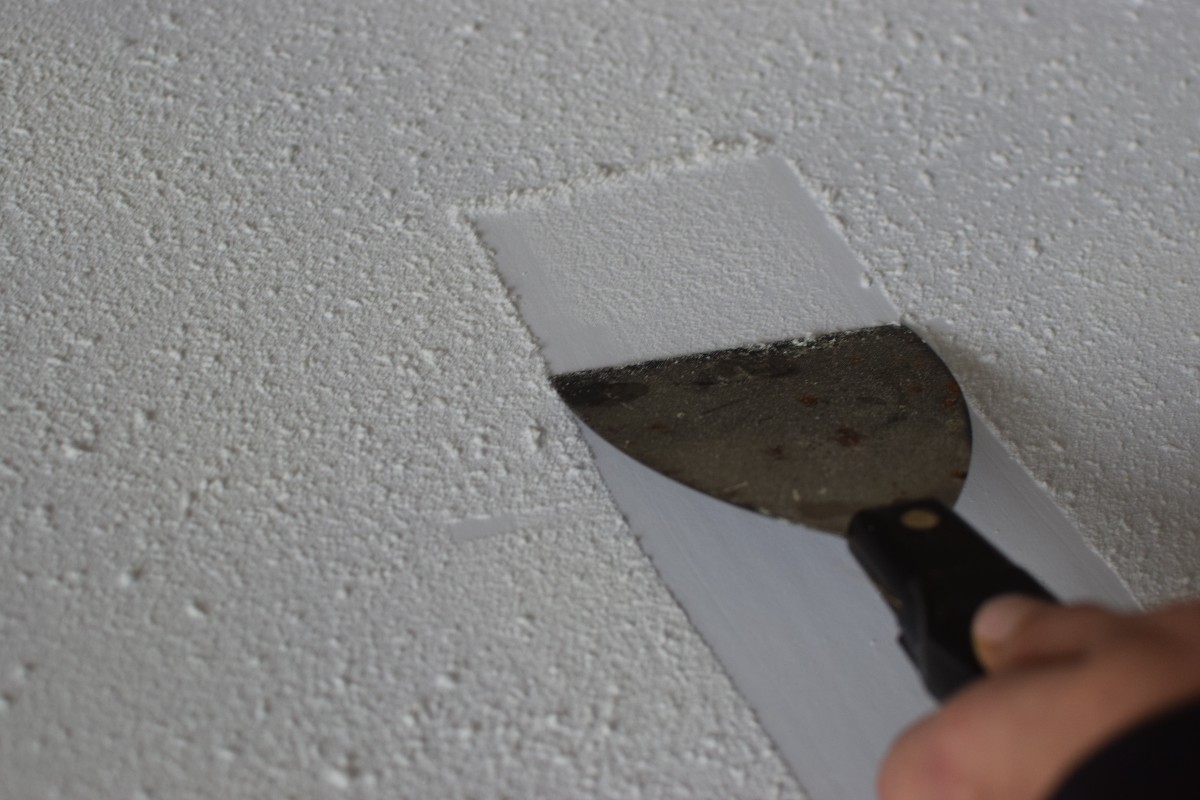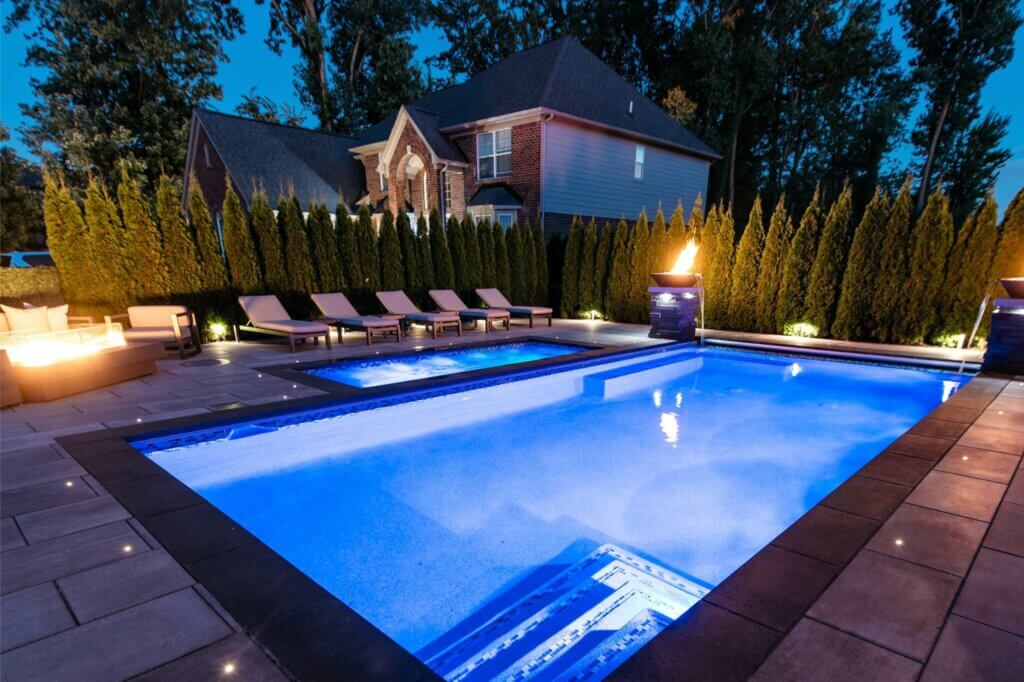Contents
Industrial houses have become increasingly popular for their unique blend of rugged charm and modern appeal. Rooted in the aesthetic of converted warehouses and factories, these homes embrace raw materials, open-concept layouts, and minimalistic designs. Typically characterized by exposed brick walls, concrete floors, steel accents, and high ceilings, industrial homes are ideal for those seeking a minimalist yet bold living space. This style highlights the beauty of unfinished elements, emphasizing materials that are often hidden in traditional homes. It’s a design approach that combines functionality with artistic expression, perfect for urban dwellers and anyone drawn to edgy decor.
Key Features of Industrial House Design
1. Open-Concept Layout
Industrial houses often feature an open floor plan that allows for a seamless flow between spaces. This layout is influenced by the design of old warehouses and factories, where walls are minimal to accommodate large, open workspaces. In residential settings, this open-concept layout promotes a sense of spaciousness and encourages interaction between different living areas. Kitchens, dining rooms, and living rooms blend together, creating a unified environment.
2. Exposed Materials
One of the most distinctive features of an industrial house is the use of exposed materials. Rather than hiding the structural elements, industrial homes celebrate them. Exposed pipes, ductwork, and beams are left visible, giving the space an authentic, unpolished look. Brick walls and concrete floors are commonly left unfinished to enhance the rustic vibe. This design choice not only adds character but also brings a sense of authenticity to the space, as if every part of the house has a story to tell.
3. High Ceilings and Large Windows
High ceilings are a hallmark of industrial-style homes, echoing the spacious feel of factory interiors. Often paired with large, black steel windows, these homes maximize natural light and create a bright, airy atmosphere. The combination of high ceilings and big windows helps soften the rawness of materials like metal and concrete, creating a balanced environment that feels open and inviting rather than cold.

4. Industrial-Style Furniture and Decor
Furniture in an industrial house tends to be minimalist yet functional, often made from materials like metal, leather, and reclaimed wood. Industrial-style furniture is robust and durable, with designs inspired by vintage factories and warehouses. Think metal shelving, sturdy wooden tables, and leather couches with a worn-in look. Industrial decor often includes items like vintage clocks, Edison bulb lighting, and repurposed items that give the space a unique character.
Tips for Creating an Industrial House Look
Embrace Raw, Unfinished Surfaces
When designing an industrial-style home, don’t shy away from rough textures. Materials like concrete countertops, reclaimed wood decor, and unfinished metal accents can all contribute to the industrial aesthetic. These elements create a tactile, visually interesting environment that feels authentic and grounded.
Use a Neutral, Earthy Color Palette
The color scheme for industrial houses typically revolves around neutral, earthy tones. Shades of gray, black, white, and brown are commonly used to enhance the raw feel of the materials. You can add warmth to the palette with hints of rust, copper, or dark green through accessories and small decor items.
Add Industrial Lighting
Industrial lighting is an essential element of the design, helping to reinforce the rugged feel of the space. Pendant lights, especially those with metal shades or Edison bulbs, are popular choices. Vintage-inspired light fixtures also add character, casting a warm glow that complements the exposed materials and creates an inviting atmosphere.
Choose Functional, Multi-Purpose Furniture
Since industrial houses are often minimal in decor, the furniture should be both functional and stylish. Metal shelving units, multi-purpose tables, and open shelving are practical additions that serve both as storage solutions and decor elements. Opt for pieces that have a bit of a vintage feel, like an old drafting table or metal lockers, to add to the warehouse-inspired look.
Why People Love Industrial Houses
The industrial house aesthetic appeals to people for a number of reasons. The style has character and history, and each element feels intentional rather than ornamental. The raw, unfinished look of the materials creates a space that’s both bold and inviting, ideal for people who want a home that reflects their individuality. The focus on reclaimed materials and sustainable practices is also appealing to those who are environmentally conscious. Additionally, the open layout of industrial houses promotes a sense of community, as the lack of walls encourages connection and interaction within the home.
Frequently Asked Questions about Industrial Houses
What materials are best for an industrial house?
Industrial houses emphasize raw and durable materials such as brick, concrete, metal, and wood. Using these materials not only enhances the industrial look but also ensures longevity. Reclaimed wood and salvaged metal add sustainability and a unique touch, as each piece carries its own history.
Is industrial design suitable for small homes?
Yes, industrial design can work beautifully in smaller spaces. By focusing on open-concept layouts and using furniture that serves multiple purposes, you can make a small home feel spacious. Exposed elements and a neutral color palette also create a sense of depth and continuity, making the space feel larger.
How do I add warmth to an industrial house?
Adding warmth to an industrial house can be achieved by incorporating warm lighting, soft textiles, and earthy accents. Leather furniture and wooden elements bring warmth to the otherwise cold, hard materials typical of industrial design. Plants and rugs can also soften the look and add a cozy, lived-in feel.
What are some common decor items in an industrial-style home?
Industrial decor items often include vintage light fixtures, metal shelving, wire baskets, Edison bulbs, and industrial wall art. Repurposed furniture and accessories made from salvaged materials also contribute to the industrial aesthetic. Items with a worn or aged look fit well with the industrial style, adding a sense of authenticity to the space.
Can I mix industrial style with other design styles?
Absolutely! Industrial style mixes well with other aesthetics, such as modern, rustic, and minimalist. Many people combine industrial elements with a modern color palette or rustic wood accents to create a personalized look. Just keep the design balanced by choosing complementary materials and colors to avoid clashing styles.
Final Thoughts
Industrial houses are a testament to how beauty can be found in raw materials and unfinished elements. By celebrating simplicity and highlighting the character of natural materials, industrial homes offer a unique living experience that’s both functional and full of personality. This style is perfect for those who appreciate history, craftsmanship, and minimalism with a bold edge.
Whether you’re renovating a warehouse space, planning a new home, or simply updating your decor, industrial design principles can add an unforgettable sense of style to any environment. Embracing the industrial look means creating a home that’s authentic, sustainable, and timeless—a true reflection of individuality and style.
You May Also Read:





